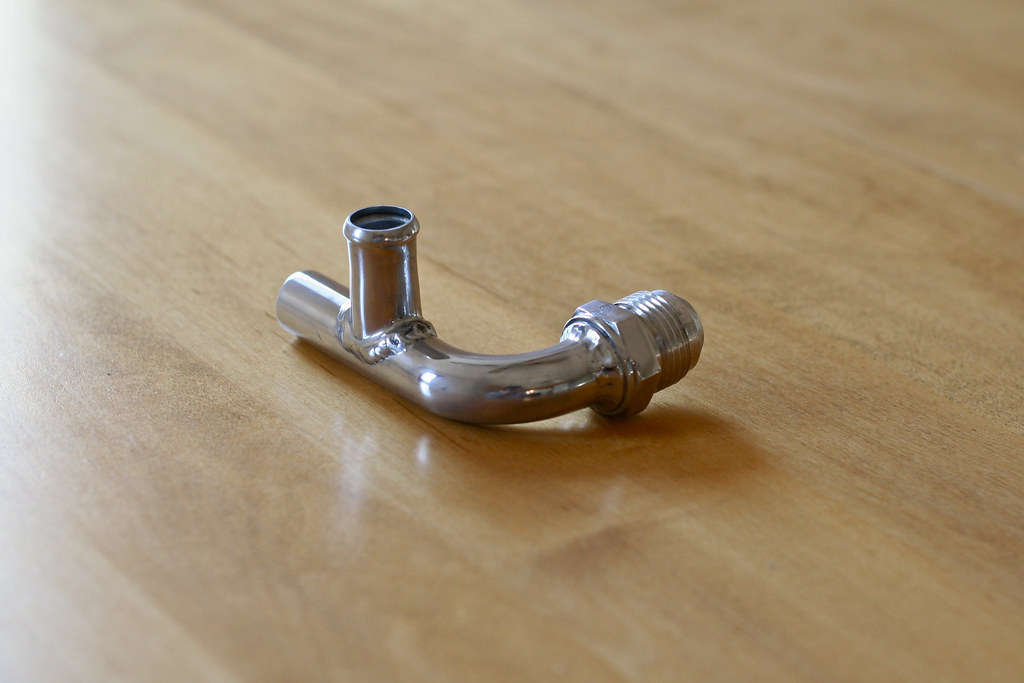An elaborate solution for a simple problem, all because I didn’t want a coolant bypass hose touching the intake.
When I first mocked up the turbocharger, with my new manifold, it was clear that its position was going to interfere with the original route of the passenger side hoses. The lower radiator hose was modified first, being shortened somewhat, while the thermostat housing was cut up and welded back together. The hose right below it (the one that connects the block to the hardline on the passenger frame rail) was initially shortened so that it ran a little closer to the motor, meeting my original need of clearing the turbo (it can be seen in a picture in this post). Later on while fabricating my intake, it became an issue again, rubbing against the tubing. Being that it wasn’t the best solution in the first place (the molded hose ended up a bit kinked) I started playing with alternatives. Because the hose was trying to make a 45 degree turn off of a straight fitting (on the block) I first tried replacing the stock fitting an Earl’s 45 degree swivel fitting (this required an XRP metric to AN adapter).



